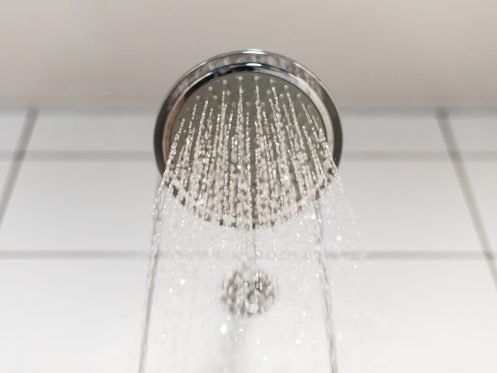It’s one thing to enjoy a gentle stream in the garden, but inside your house? Not so much. Whether your shower feels weak or your dishwasher takes forever, low water pressure can mess with your day in more ways than one. The cause isn’t always obvious, and fixing it doesn’t have to mean replacing everything.
Why Pressure Changes Between Fixtures
When one sink works fine but another barely dribbles, it’s not just random. Pressure variation between fixtures usually means something in the plumbing layout or condition is interfering. That might be a narrowing pipe, a pinched bend, or sediment that built up unevenly between lines.
Fixture-specific problems, such as a clogged faucet cartridge or a broken diverter in the shower valve, could also cause it. The tricky part is that different fixtures react in different ways, which makes the problem harder to pin down unless you know where to look.
Take a bathroom with two sinks. If one flows fine but the other sputters, the difference might be in the connector or the shutoff valve under the cabinet. But if a shower runs weak while the toilet next to it fills fast, the issue may lie further up the branch line. When pressure seems fine in the kitchen but slow in the laundry room, look at the length and material of the pipe run.
Every small piece adds resistance. These differences tell a story, and noticing patterns can help you understand where the drop begins. You’re not looking for a universal cause. You’re looking for the section of the system that behaves differently from the rest.
Old Pipes Don’t Play Nice With Modern Fixtures
Some homes still run water through materials that date back decades. Galvanized steel, for example, was common in older construction but doesn’t hold up well after years of use. As it corrodes inside, the space for water to move shrinks until pressure drops enough to cause real headaches.
It’s not always visible from the outside. You could have a pipe that appears solid on the surface but flakes apart internally due to rust and buildup. Even copper, which usually lasts longer, can wear thin or corrode from acidic water.
Older pipes also struggle to keep up with today’s plumbing demands. Water-saving fixtures sometimes require higher baseline pressure to function as designed. If your shower head sputters or your dishwasher takes forever to fill, the plumbing behind the wall might not be pulling its weight anymore.
You could swap fixtures, upgrade appliances, or change washers, but none of it works if the pipe feeding them can’t keep up. Replacing sections with modern materials doesn’t just help with pressure. It reduces the risk of future leaks and gives your plumbing a better chance of lasting another few decades.
How a Partially Closed Valve Throws Everything Off
Pressure losses can be as simple as a valve that didn’t open all the way. Maybe it was turned off for a repair or closed during a winter freeze precaution. If someone forgets to open it fully after the job, that slight restriction slows everything down.
The handle might look fine at a glance, but a few turns short make a big difference in flow. Main shutoff valves, isolation valves near water heaters, and gate valves on branch lines all have the power to affect the rest of your system.
This kind of pressure problem shows up fast but hides well. It might follow a repair or installation. If you recently worked on a water heater, had a plumber replace a fixture, or did a seasonal shutoff, check the valves first.
Turn them all the way open and listen. When the water whooshes back or the pressure returns to normal, you’ve probably found your fix. It’s easy to overlook something that simple, especially when everything seems to be working but just a bit too slowly.
When Sediment Starts to Build Up
Water leaves behind more than moisture. Minerals, sand, and small debris move with the flow and settle wherever the current slows. That usually means corners, valves, and the interior walls of older pipes. As the sediment layers up, it narrows the passage and changes how water flows through.
You might notice this first in your washing machine, where the intake filter traps grit, or in the shower, where the head sprays unevenly. Sediment also accumulates inside water heaters, where it rattles during heating cycles and consumes space intended for hot water.
This kind of buildup happens slowly. It doesn’t knock pressure down overnight, but it chips away until your fixtures underperform across the board. You can sometimes flush it out from faucets or water heaters, but once sediment hardens or clogs interior parts, removal becomes trickier.
If your home runs on hard water, the risk climbs. Minerals like calcium and magnesium in Georgia’s water leave a trail in every line they pass through. To fix that, you might need to descale appliances, install filters, or have pipes cleared by a pro. Ignoring it lets the grit keep stacking until the water barely moves.
Dealing With Pressure Drops After Repairs
Not every repair improves pressure. Sometimes a fix brings its own problems. You might replace a faucet, only to find it runs weaker than before. That could be due to a debris shift during installation or a misaligned washer. Other times, sediment shaken loose from one part of the line clogs another. A valve opened or closed during the job might not sit right again, creating a partial block.
If you just upgraded a water heater or reworked a bathroom, compare the before and after pressure. Think about what changed. New fixtures restrict flow more than the old ones. Some eco models reduce pressure intentionally. If you’re adjusting to lower flow after a project, figure out whether it’s by design or by accident.
When It’s Time to Let a Plumber Step In
You can jiggle the handle, clean the aerator, and even try adjusting a valve, but sometimes, water pressure problems don’t have a surface-level fix. When nothing changes after the basic checks, it’s time to ask what’s happening behind the walls or below the floor.
A licensed plumber brings tools you won’t find in a home toolbox. They can test your pressure with gauges, trace the source of a drop, and identify whether the root cause is hidden corrosion, a faulty connection, or something structural.
You won’t always know what’s wrong from symptoms alone, but a professional will know where to look and what to test first. If you’ve hit a wall with DIY fixes, it’s worth calling someone who can map out the pressure system with precision and figure out why it’s falling short.
Bring Back Your Water Pressure Today
Our team at Kennon Heating, Air & Plumbing provides an array of plumbing services, including drain cleaning, toilet and garbage disposal repair, and water heater services. If you’ve had enough of half-pressure frustration or other plumbing issue, it’s time to hand the job to our pros at Kennon Heating, Air & Plumbing in Cumming, GA.



